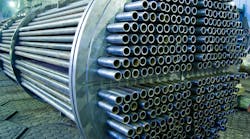In the February 2019 Energy Saver column, I asked readers if they had examples of entrenched operations or operators blindly following outdated procedures, (see: “Why Continue to do That?”). In this month’s column, I cover two of the responses.
Art Krugler shared an experience from 1951, early in his career. He was a new chemical plant engineer and relief supervisor on the graveyard shift. His plant’s large tunnel dryer, 80-ft long, dried an extruded organic sulfur compound. Air entered through side blast gates, circulated over steam coils, and exhausted with evaporated water from the organic compound.
The dryer formed a bottleneck in the process; an urgent need existed to increase throughput by 25%. To meet this need, the company planned to extend the dryer by 40 ft. This, in turn, required moving grinding, sifting and bagging facilities 40 or 50 ft, as well as extending the plant building and relocating several other major items of equipment. The direct cost of the proposed modifications ran to millions of dollars, quite apart from the cost of lost production during implementation.
During one of his night shifts, under orders to keep production at maximum, Art opened two partially closed blast gates, and was surprised to find the product wetter. After quickly closing the gates, he then spent the rest of the shift closing all the rest, stepwise, except the first. By the end of the shift, production increased by 30%! Closing the gates eliminated most of the air from the dryer. Without the air, heat from the steam coils evaporated moisture from the product. Furthermore, removing the air increased the heat transfer coefficient, which improved the drying rate.
Like many energy-saving initiatives, Art’s modification provided numerous additional benefits. In this case, it increased capacity and eliminated the cost of the revamp project. In addition, the benefits came immediately compared to the revamp’s four-month lead time. Sadly, he didn’t receive a pat on the back from management, let alone a reward — although Art comments it would have been fun to listen in on the discussion the morning after his shift!
Brad Buecker, a fellow Chemical Processing contributor, provides the second example. Several years ago, he and a colleague were called in to investigate an air-cooled heat exchanger (ACHE) that wasn’t meeting startup performance guarantees at a power plant in the Los Angeles area. The ACHE was part of a closed-loop water cooling system for air compressor intercoolers; the water temperature entering the ACHE could reach 120°F. The main run of the cooling system utilized ductile iron pipe, with carbon steel for the branch lines.
The engineers on site opened some fittings on the ACHE and found black deposits. They assumed the deposits were iron, and contacted chemical cleaning firms for bids. However, Brad and his colleague asked them to wait until they could inspect as well. After they arrived, one of the engineers brought in a chunk of the material from a witches’ hat strainer on the main circulating line. The black deposit appeared to be organic in nature, not iron. Dropping the deposit into a cup of the gasoline confirmed this, as it immediately dissolved. This probably saved $500,000 to $1,000,000, by avoiding a chemical cleaning that wouldn’t have worked with reagents selected for iron.
So, where did the organics come from? The company’s standard materials guidelines called for mastic-coated, cement-lined ductile iron. Once the plant came up to full power and the closed-loop cooling water reached maximum temperature, the heat disintegrated the mastic material, which then quickly fouled constricted spots in the system, most notably the ACHE heat exchanger elbows.
The company did, and still does, maintain an accurate list of lessons learned from projects; this one was at the very top. They were scheduled to install the same piping on another plant in the Los Angeles area, where construction had just started, but were able to make corrections before any pipe had been laid. Well-established chemistry is available to protect iron and steel piping in both closed and open cooling water systems, without resorting to coated materials.



